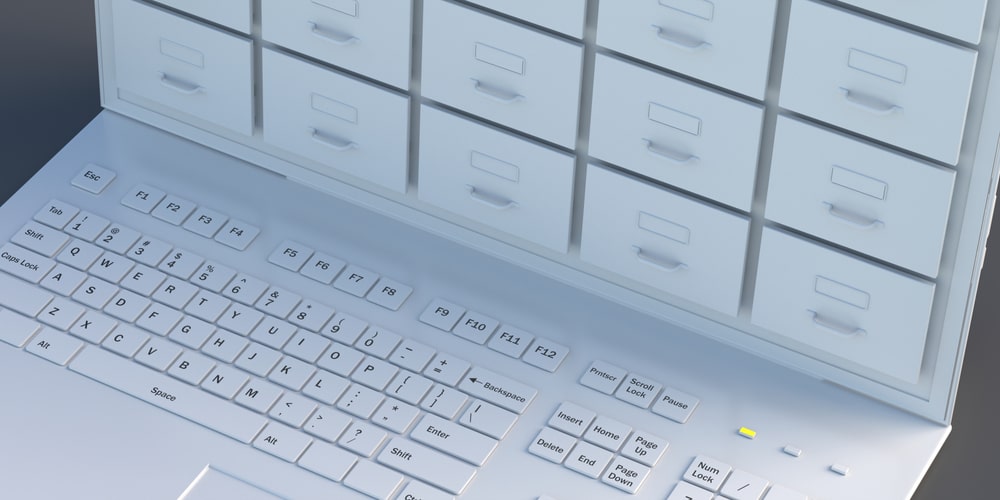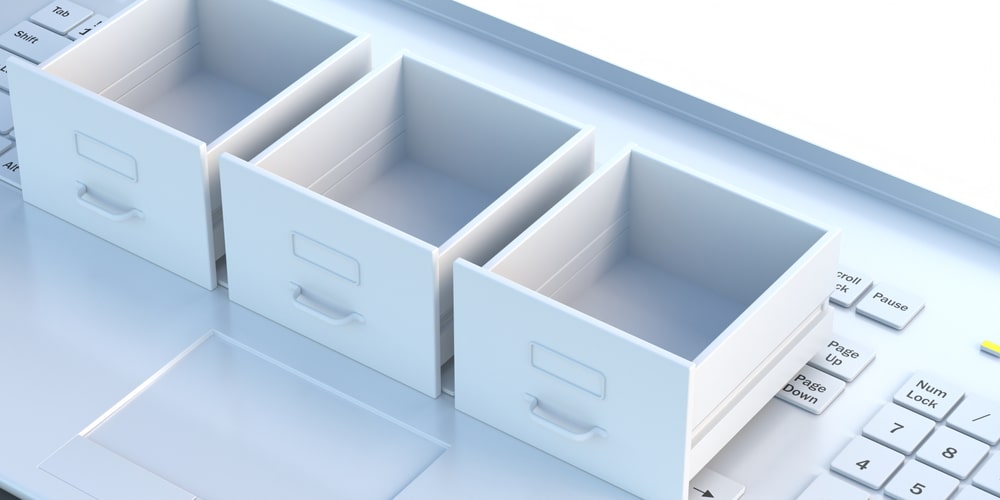Ever go to write a piece of content or copy, only to find yourself staring at a blank screen for hours? The truth is that a lack of inspiration can derail your B2B content marketing strategy—and creative blocks are often the culprit. Unfortunately, if you're a marketing pro, you likely don't have the luxury of waiting around for the muse to strike. Instead, you need a way to get into a creative mindset fast, and that's where a swipe file can prove invaluable.
Used by B2B copywriters, content writers, bloggers, and creatives, a swipe file is a rich source of motivation and can help you become a better writer over time. And no matter your industry or niche, it's something you can more than likely benefit from using.
Here we'll explain what a swipe file is and take you through a step-by-step guide to creating and using one, so you can start improving your writing flow today.
What Is a Swipe File?

A swipe file is a collection of copy that inspired you, made you take action, or that you wish you'd written yourself. You could think of it as a scrapbook of your favorite clippings from the internet and beyond, one that you can turn to whenever you need inspiration or ideas.
Swipe files originated in the copywriting world when marketers kept physical folders of powerful copy and advertisements to channel into their work. But today, swipe files are typically digitized for quick reference.
Why a Swipe File Is So Useful
Let's be clear: the point of a swipe file is not to copy and paste ideas into your work. That's plagiarism. For B2B content marketers, the point is to understand the underlining principles behind good B2B copy. After all, how can you learn to write good copy if you don't know what it looks like or how it is composed?
Think of how great fiction writers are all voracious readers or how artists spend a lot of time in galleries. They don't perform these activities to steal the work of others but to learn from them and develop their own voice or style. There's no reason why copywriters and content writers shouldn't do the same.
The advantages of having a swipe file are numerous:
- You stay inspired
- You develop your writing voice
- You learn the techniques that go into creating great content and copy
How Can B2B Content Marketers Benefit From Using a Swipe File?

Although the concept of swipe files began in the consumer advertising world, you can apply the idea to many different writing disciplines. Many B2B marketers, for example, struggle with coming up with thought leadership marketing topics, media pitches, bylined articles and other content. A swipe file can give you a great head start.
How to Create a Swipe File In 5 Steps
1. Identify What To Keep In Your Swipe File
The first step to creating a swipe file is identifying what you will put in there. And what precisely that is will be unique to you.
Here are just a few examples of the kind of copy you may choose to collect:
- Headlines
- Email subject lines
- Conclusions
- Effective CTA's
- Quotes
- Good use of social proof
- Infographics
You don't need to include every good bit of writing you come across, only that which is relevant to you and what you do.
So, for example, if you specialize in B2B email marketing, you might want to collect email subject lines from B2B brands like Salesforce, HubSpot and Slack. On the other hand, if your focus is web copy, you might want to focus on the composition of good landing pages.
2. Create a Filing System
Where you keep your swipe file is up to you, although you will almost certainly want to keep it digitized. And there are plenty of note-taking and spreadsheet apps you might consider using, including:
- Google Drive
- Dropbox
- Evernote
- Obsidian
Wherever you keep your swipe file, developing a system for keeping it organized will be good practice. Of course, such can be achieved by using folders, but a tagging system might be preferable to make quick access possible.
For each item of copy you store into your swipe file, you'll also want to note down the original link to where it came from. That way, if you ever want to directly reference the material in your work or see the copy in its full context, it will be easy to do so.
3. Identify Effective Copy
Once you have a system in place for storing excellent writing, it's time to get out there and read some. Of course, you don't just want to add any half-decent work to your file, or it will soon be crammed full of average content. Instead, focus on writing that made you take action, had you engrossed, or made you envious of the author.
Don't just focus on text either, but consider:
- How the content addresses the author
- How the author has chosen to format the copy
- How the writing presents its story and how that story progresses
- How short or long the piece is
- The use of multimedia storytelling, visuals and white space
4. Make Notes and Ask Yourself Questions
Storing writing samples in your swipe file is a start, but you will also want to give it some context. Note what it is about the copy that caught your eye and why exactly you think it is effective. If you took action because of the writing, make a note of that as well.
It can be helpful to ask questions and note down your thoughts to further your understanding. Think about what exactly it is you can learn from the piece of writing and ask yourself if there's anything you would have done differently. In particular, try to identify the underlining techniques the author is using and how you can apply them to your work.
Remember you're storing this information for your future self. So, focus on creating a document that will provide context and help generate ideas and ways of thinking.
5. Reference Your Swipe File During Projects
Even a stellar swipe file is useless if you never look at the thing. So reference it often when outlining a new work of copy or whenever you need inspiration. And don't forget to put aside a little time to study why the writing in your swipe file is so effective.
As you build your swipe file up over time, it can also become an excellent source for sourcing quotes on particular subjects from thinkers you admire. Just remember to reference any ideas that are not your own.
Conclusion
A swipe file is a useful tool that can provide you with inspiration on demand. It's also a place to study your writing heroes (like famous novelists, for example) and develop your unique style.
Of course, building up the samples in your swipe file can take time. And it may take months or even years to amass a comprehensive collection of content, and it will continue to grow even then. However, the sooner you get started, the sooner your swipe file will become an invaluable resource—and the payoff will be worth it.

 6 min read
6 min read





 7 min read
7 min read

